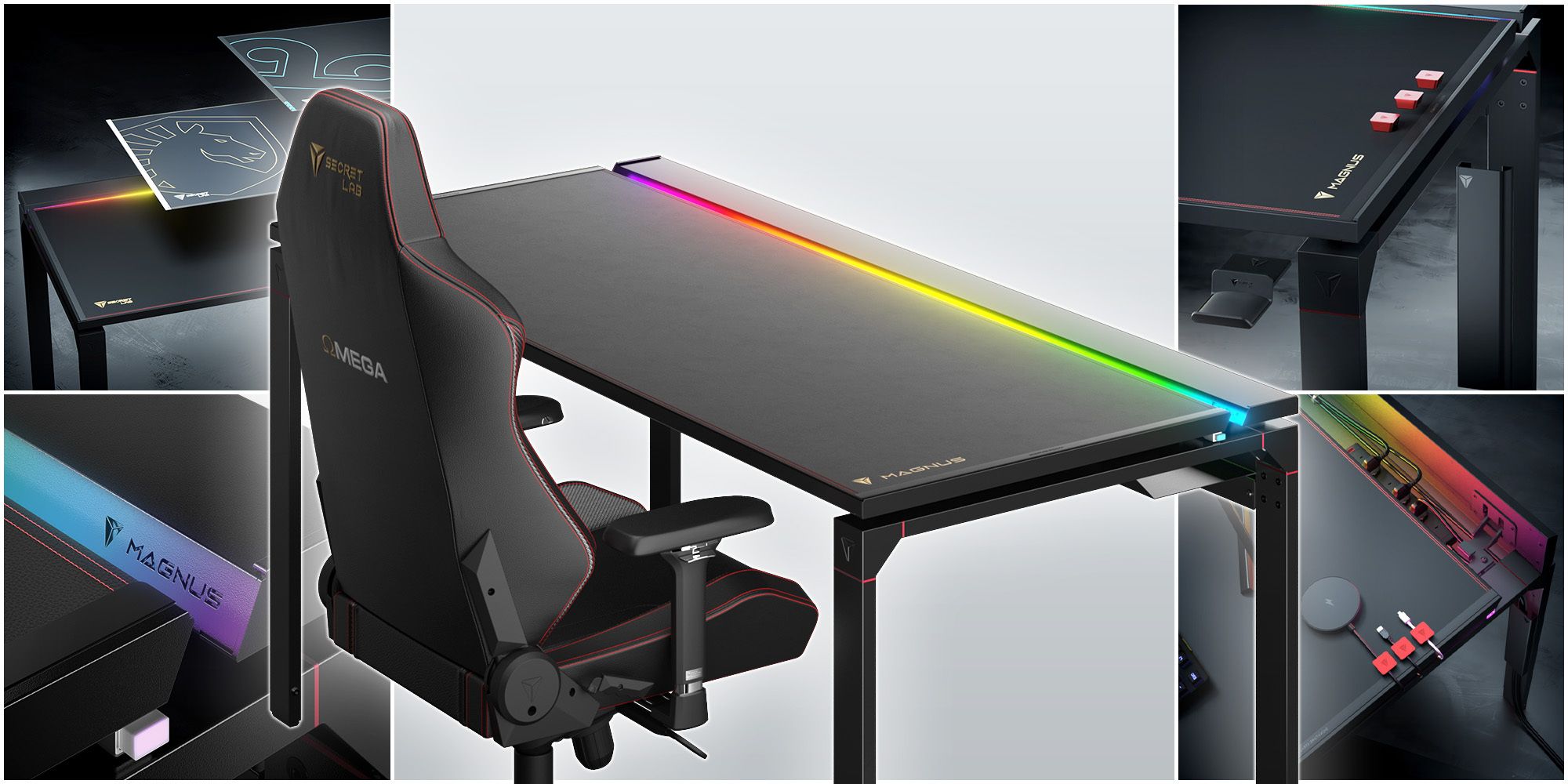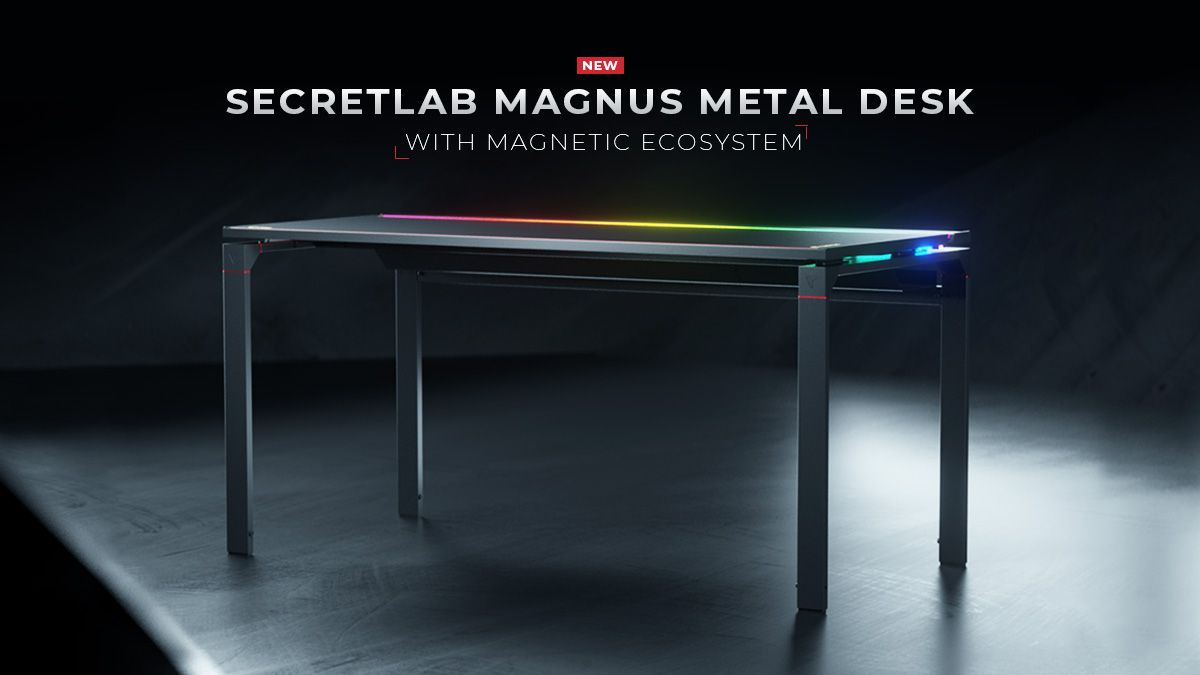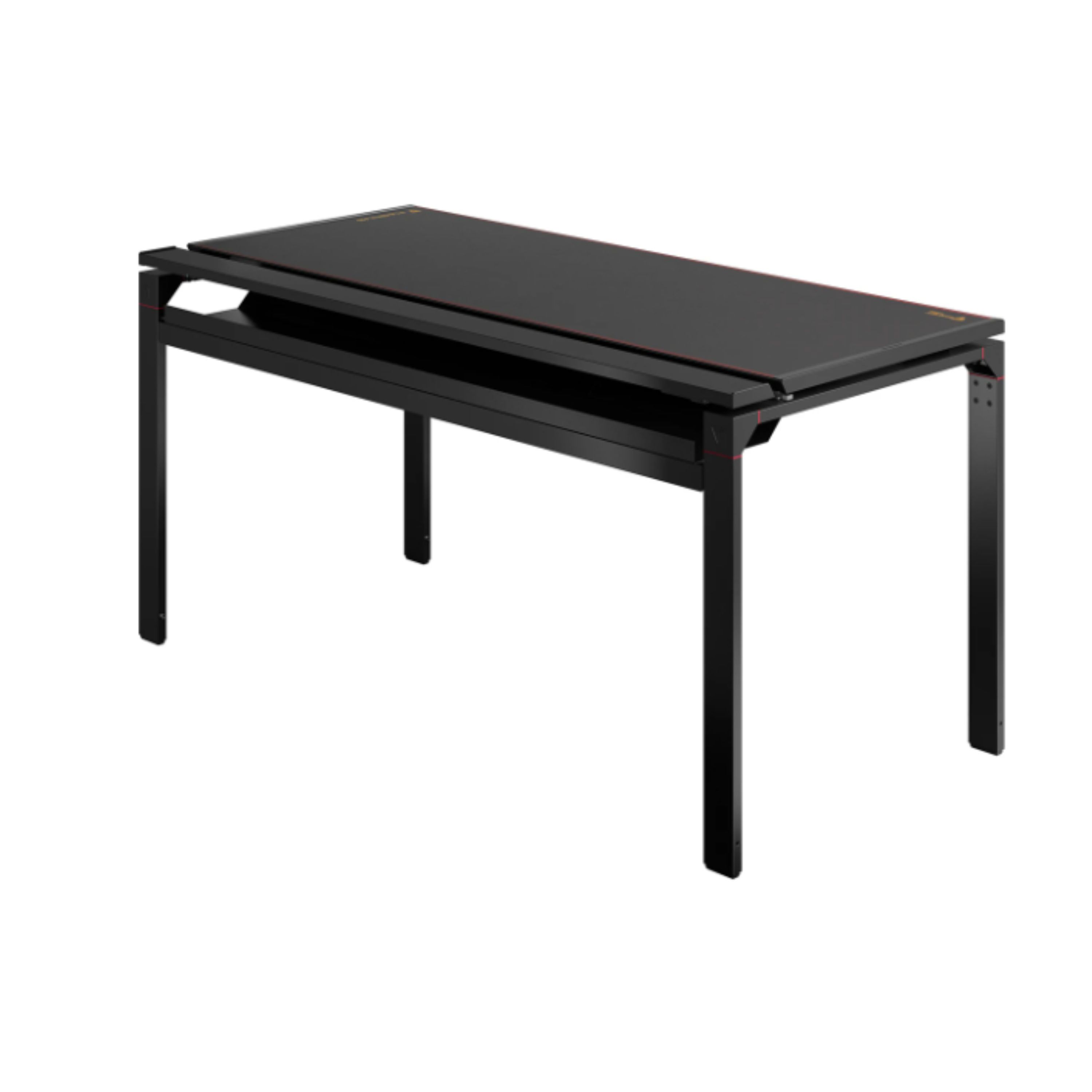Secretlab gaming chairs are everywhere. In just a few short years, the brand has become a household name in gaming circles, popping up on streams and video calls across the globe. The company made a name for itself creating high-quality chairs (see our Titan Evo 2022 Review), and is ready to take over a new element of your at-home setup: the desk itself.
With the Magnus, Secretlab has managed to take an inherently boring piece of furniture and make it, well, fun. And it turns out all desks needed to come alive were magnets — lots, and lots of magnets. By leveraging the Magnus’ steel chassis, Secretlab has created an array of magnetic accessories that instantly attach themselves to its surface. The end result is much, much cooler than it sounds on paper. What Secretlab has effectively managed to achieve is to make your desk (yes, the shelf-on-legs that all your cool stuff sits on top of) feel like something you can tinker with, personalize, and modify on a whim. The trade-off with this painless setup is taking an already pricey desk (the MAGNUS Metal Desk starts at 549 USD) and making it even steeper.
Secretlab MAGNUS METAL DESK
- Materials: Metal
- Surface Dimensions: 59” (L) x 27.5” (W)
- Height: 29” / 735mm; Extendable by up to 0.8" / 20mm
- Max Load: 220lbs
- Cable Management is as good as you think
- Magnet accessories are practical (and feel futuristic)
- Design is slick, subtle, and comfortable
- Easy to assemble
- It's an expensive desk and ecosystem
- It doesn't come with all the accessories that make it unique
- Adjustable height isn't significant
How Does It Look In A Room?
Unlike Secretlab gaming chairs, which have a ‘big’ presence that immediately catches the eye (and can take over a small room), the Magnus desk is a subtle and slick piece of furniture. Before adding any magnetic bells and whistles to the equation, the metal desk is mostly nondescript except for an embossed Secretlab logo and a quiet red metal stripe on each leg. The textured metal finish is cool to the touch and crucially feels heavy and solid. The desk top supports 220.5 lbs and you can tell when you try to move it — the whole unit feels incredibly sturdy.
Our own James Kosur who works behind the scenes at Valnet bought himself a Magnus at the same I was putting together this review. He graciously contributed a lot of the snazzy photos in this review, and specifically mentioned how much he loves that his 55-inch odyssey ark monitor (which weighs 91.49 pounds) puts virtually no stress on the top of the desk.
And the quality design isn’t only skin-deep. The tabletop itself hovers above the rest of the unit, a striking and practical design choice that leaves room for a mic arm or screen mount to attach easily anywhere along the edge of the desk. Its unique cable management design also allows it to sit flush against the wall. This is a small but meaningful space-savings that in my office made the desk feel smaller than my old unit, despite having a bigger surface area. The feeling wasn’t dissimilar from replacing a chunk TV with something thinner and more elegant.
With the Secretlab Magpad accessory, the entire desk takes on a bit more of a professional aesthetic. The leatherette mat rolls out across the top the table top and firmly (repeat: firmly) connects at each end of the desk, giving the whole thing a slightly softer feel without sacrificing any of the heavy characteristics of the Magnus. It’s a simple luxury, but the quiet ‘thud’ of tossing my phone on the leatherette was an immediately noticeable and welcome change compared to the “clop” noise you get out of any other table. Yes, yes. I know. But sometimes you need to enjoy the simple things.
The only area where I was disappointed at the outset was the small leather hatch under the desk that opens up into the cable management compartment. The leather flap is connected to the desk with powerful magnets that are so strong they were almost immediately ripping themselves out from under the leather when I went to access the compartment.
The one thing I haven’t had a chance to bear out before this review is: what will this desk look like in a month or in a year? It’s hard to tell if the Magpad is going to wear out or get scuffed easily, and the same can be said for the rest of the unit. In my first couple weeks the Secretlab Magnus continues to look incredible, but I haven’t split coffee, beer, or tried eating pistachios on it yet, so there’s plenty of time for me to decide the aesthetics don’t hold up under pressure or deal well with a damp cloth.
Out Of The Box And Into A Table
The instruction manual repeatedly tells you this is a two-person job. Repeatedly. And I’m not much of a rule-breaker, but I did assemble this alone (No one tell Secretlab, got it?)
As much as I would have liked to have someone else’s help for simply moving the heaviest pieces from one end of the room to the other, it’s a very simple setup. Everything comes packaged in four well-labeled boxes and has easy-to-follow IKEA-style step-by-step instructions. There’s a toolkit packed into the box with an Allen key and all the screws you’ll need, so you won’t need any other material to put the Magnus together.
One thing to know out of the gate is that you’ll need to clear out a significant amount of space before starting. Needless to say, a big disassembled table top is unwieldy and you’ll need more space than you think to get things set up. One other caveat to be aware of is that the legs themselves come with detachable cardboard labels that note which one is which, removing these before you’re ready to slot the legs in can cause some stress and confusion.
Magnets, Always With The Magnets
The best part of the Magnus is the way its metal frame interacts with all of its magnetic accessories. These accessories are also the thing that balloon the cost of the desk. Ultimately, these are additive luxury elements on top of a desk made for enthusiasts. As cool as everything listed here is, they’re also all luxuries, not necessities, and it’s a big ask to buy into the Secretlab magnet ecosystem for the long haul. The value proposition here is going to be a very personal one, and will ultimately boil down to how much you care about having an easy-to-maintain and uncluttered desk.
But seriously having everything held in place by magnets is unreasonably cool.
The Magnus includes one cable management tray in the box to shield pesky wires from sght. The tray actually attaches vertically to the back leg of the Magnus and you can run the cables from your computer, up the leg, and into a runway under the desk up to your monitor. It’s a neat trick that works pretty well. I never managed to erase wires from my life altogether, but I’m also using a fairly old computer with a small mountain of dongles floating out the back.
I also got to play around with the Secretlab Magnetic Cable Anchors and Secretlab MAGRGB™ (Smart Lighting Edition).
The Cable anchors are functionally small caps that you can run your wires through so they don’t slip behind or off the table. Since the anchors are magnetic, you can place them on the top of the tabletop or off the side of the desk — whatever your setup requires. Like all the magnetic accessories, these really do sit firmly on either surface without scuffing the surface (so far), all it takes to pop them off is a little force.
The Magrgb is a light strip that runs along the underside of the tabletop reflecting light against the cable management lid, so that it lights up the wall behind the desk itself. It’s a pretty darn cool effect that can be customized to a few different light patterns. As you would expect, the light strip snaps in place using magnets, so there’s no confusion if you’ve attached them well or not. Unfortunately, the power connector that bridges the lights to the plug (and remote control which is connected directly to the wiring) doesn’t connect quite as seamlessly. The connector did pop out from its socket a few times while I was tidying up my cable management. It’s an easy fix, but it was surprising given that everything else I’ve attached to the Magnus has been so well considered. The remote itself is fairly basic, but it gets the job done, and there are a few different ways to control the lights without ever using it.
The Smart Light edition can be synced up with Apple Homekit letting anyone in the iOS ecosystem easily turn them on, off, or have the lights be scheduled for specific times or days of the week. Alternatively, the lights can be handled via the Nanoleaf app, however, we did run into some issues synchronizing our devices on the current build. Specifically, the Magrgb only currently supports Nanoleaf Firmware 1.6.3 which means it doesn't sync with the Nanoleaf Desktop app or provide support for Thread technology which allows for faster syncing between Nanoleaf devices. This seems like the kind of issue that could be fixed with a firmware update, but that remains to be seen.
Summary
The story of Secretlab’s foray into the world of desks is all about magnets. After setting up and using the Magnus desk for a bit, I started looking around my house and imagining what if every loose item I had was held in place by an invisible force (yes, other than gravity). Obviously, I wouldn’t want my entire home to be a brutalist pure metal decore, but the simple luxury of adding new elements to a table without having to think much about how it’ll all fit together makes a strong impression.
And that’s what Secretlab has managed to do with the Magnus, they’ve made me want to tinker with and “upgrade” my desk in ways I’d never really considered before. The downside of that itch is, of course, the cost associated with adding new bells and whistles. It’s a luxury purchase that won’t make sense for everyone, but the Secretlab Magnus has helped me declutter my desk while maintaining a stylish presence in the room, which is exactly what it sets out to accomplish.



